No sooner had I written ‘Beelink T45 Review with Windows and Linux, and Tweaking BIOS Power Limits’ than Beelink announce they wouldn’t in fact sell that configuration but an ‘updated’ version. And it is significantly different because this new version is now actively cooled and uses an Apollo Lake N4200 processor. It also still has the same name: the Beelink Gemini T45.
I’ve now reviewed this new version and you may experience déjà vu on reading the following as in keeping with Beelink’s philosophy I’ve basically reused the same text as before and just updated where appropriate.
Beelink have further extended their ‘Gemini’ range of mini PCs by adding the T45. This is an actively cooled mini PC that uses the slightly older Apollo Lake Intel Pentium N4200 CPU which is a quad-core 4-thread 1.10 GHz processor boosting to 2.50 GHz with Intel’s HD Graphics 505.
The T45 is a ‘NUC’ style mini PC physically consisting of a 119 x 119 x 17.9 mm (4.69 x 4.69 x 0.70 inches) all-metal (and surprisingly quite heavy) rectangular case and is very similar in size to the earlier AP34 and AP42 models from Beelink. The front panel has only a blue ‘power’ LED as it is the rear panel that includes the power button, power jack, dual HDMI ports, a gigabit ethernet port, and a headphone jack. On the right side there are a couple of 3.0 USBs and on the left side are a couple more 3.0 USB ports and a full-sized SD slot. The full specifications include:
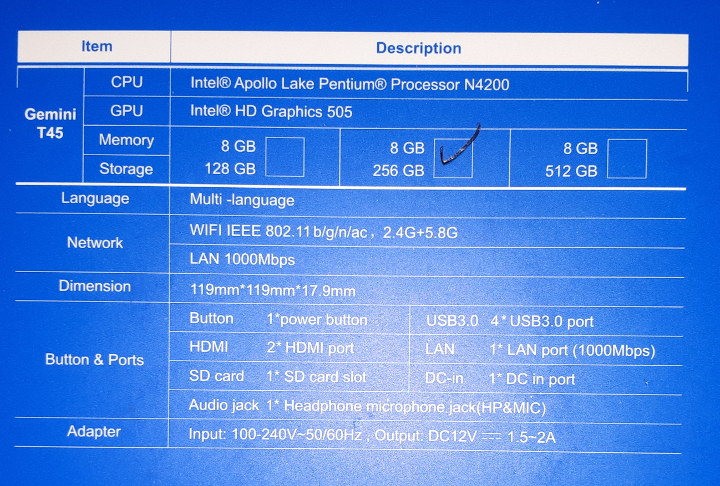
In the box you get a mounting bracket with screws for attaching the device to behind a monitor together with a couple of HDMI cables, a power adapter, a manual and a service card:
Starting with a quick look at the hardware information shows it is aligned to the specification:
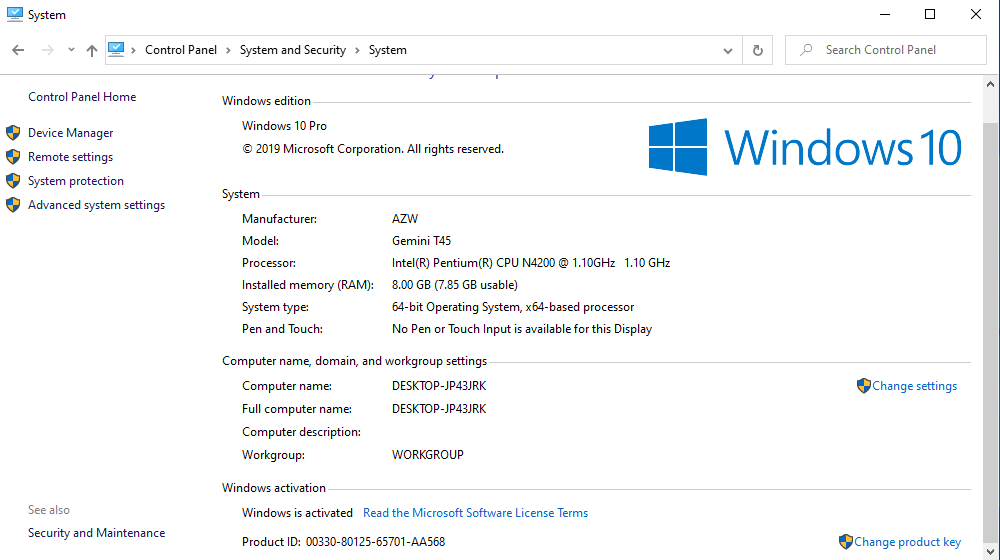
After fully updating Windows to version 1909 OS build 18363.592 I ran my standard set of benchmarking tools to look at performance under Windows:
and to compare with other Intel mini PCs:
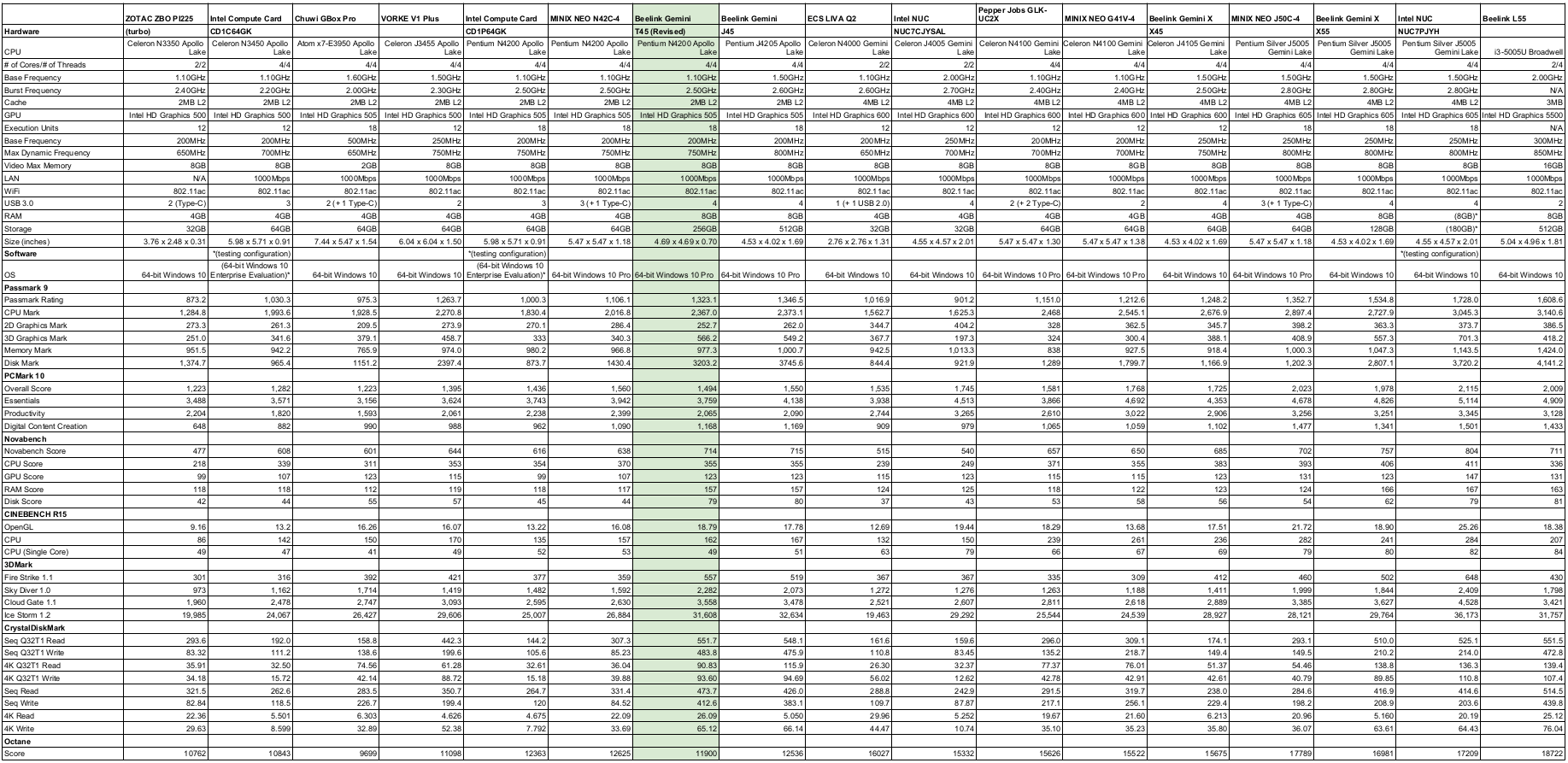
The results need interpreting carefully otherwise they could be misleading because mini PC benchmarks are heavily influenced by the quantity and type of memory and storage installed.
The Beelink T45 results using the Pentium N4200 mobile processor are very similar to but just slightly lower than the Beelink J45 which uses the desktop Pentium J4205 processor. So the change of processor arising from the ‘updated’ version (it previously had the same Pentium J4205 processor) does not look to have made a significant performance difference now that the TDP and cooling issues have been addressed.
Additionally, I also tested with Geekbench 4 and got a single-core score of 1,502, a multi-core score of 4,644 and an OpenGL score of 11,258:
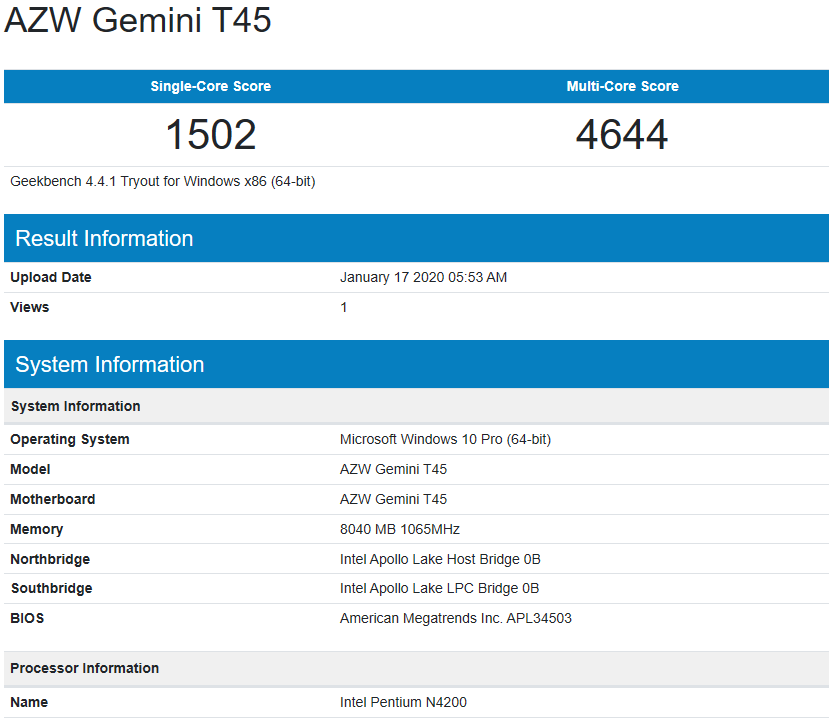
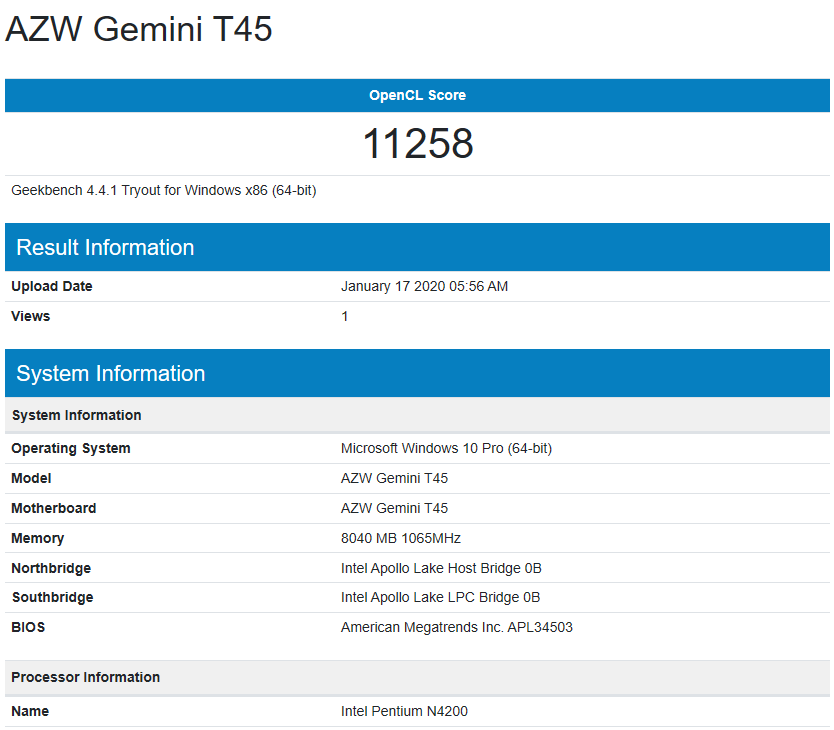
After installation and updates, a brief check showed everything working including Wi-Fi, Bluetooth, audio, and Ethernet. I then ran some basic commands to look at the hardware in more detail:
|
1 2 3 4 5 6 7 8 9 10 11 12 13 14 15 16 17 18 19 20 21 22 23 24 25 26 27 28 29 30 31 32 33 34 35 36 37 38 39 40 41 42 43 44 45 46 47 48 49 50 51 52 53 54 55 56 57 58 59 60 61 62 63 64 65 66 67 68 69 70 71 72 73 74 75 76 77 78 79 80 81 82 83 84 85 86 87 88 89 90 91 92 93 94 95 96 97 98 99 100 101 102 103 104 105 106 107 108 109 110 111 112 113 114 115 116 117 118 119 120 121 122 123 124 125 126 127 128 129 130 131 132 133 134 135 136 137 138 139 140 141 142 143 144 145 146 147 148 149 150 151 152 153 154 155 156 157 158 159 160 161 162 163 164 165 166 167 168 169 170 171 172 173 174 175 176 177 178 179 180 181 182 183 184 185 186 187 188 189 190 191 192 193 194 195 196 197 198 199 200 201 202 203 204 205 206 207 208 209 210 211 212 213 214 215 216 217 218 219 220 221 222 223 |
linuxium@T45:~$ lsb_release -a Distributor ID: Ubuntu Description: Ubuntu 18.04.3 LTS Release: 18.04 Codename: bionic linuxium@T45:~$ linuxium@T45:~$ uname -a Linux T45 5.3.0-26-generic #28~18.04.1-Ubuntu SMP Wed Dec 18 16:40:14 UTC 2019 x86_64 x86_64 x86_64 GNU/Linux linuxium@T45:~$ linuxium@T45:~$ inxi -Fc0 System: Host: T45 Kernel: 5.3.0-26-generic x86_64 bits: 64 Console: tty 0 Distro: Ubuntu 18.04.3 LTS Machine: Device: desktop System: AZW product: Gemini T45 serial: N/A Mobo: AZW model: Gemini T45 serial: N/A UEFI: American Megatrends v: APL34503 date: 12/04/2019 Battery hidpp__0: charge: N/A condition: NA/NA Wh hidpp__1: charge: N/A condition: NA/NA Wh CPU: Quad core Intel Pentium N4200 (-MCP-) cache: 1024 KB clock speeds: max: 2500 MHz 1: 2445 MHz 2: 2472 MHz 3: 2385 MHz 4: 2387 MHz Graphics: Card: Intel Celeron N3350/Pentium N4200/Atom E3900 Series Integrated Graphics Controller Display Server: X.Org 1.20.5 driver: i915 Resolution: 1920x1080@60.00hz OpenGL: renderer: Mesa DRI Intel HD Graphics 505 (Broxton) version: 4.5 Mesa 19.2.1 Audio: Card Intel Celeron N3350/Pentium N4200/Atom E3900 Series Audio Cluster driver: snd_hda_intel Sound: Advanced Linux Sound Architecture v: k5.3.0-26-generic Network: Card-1: Realtek RTL8111/8168/8411 PCI Express Gigabit Ethernet Controller driver: r8169 IF: enp1s0 state: up speed: 1000 Mbps duplex: full mac: 84:39:be:9d:05:45 Card-2: Intel Wireless 3165 driver: iwlwifi IF: wlp2s0 state: down mac: 04:ed:33:f8:77:9e Drives: HDD Total Size: 256.1GB (5.7% used) ID-1: /dev/sda model: SMI size: 256.1GB Partition: ID-1: / size: 98G used: 14G (15%) fs: ext4 dev: /dev/sda5 RAID: No RAID devices: /proc/mdstat, md_mod kernel module present Sensors: System Temperatures: cpu: 41.0C mobo: N/A Fan Speeds (in rpm): cpu: N/A Info: Processes: 244 Uptime: 1:45 Memory: 1023.3/7807.7MB Client: Shell (review-tests.sh) inxi: 2.3.56 linuxium@T45:~$ linuxium@T45:~$ df -h Filesystem Size Used Avail Use% Mounted on udev 3.8G 0 3.8G 0% /dev tmpfs 781M 1.9M 779M 1% /run /dev/sda5 98G 14G 80G 15% / tmpfs 3.9G 0 3.9G 0% /dev/shm tmpfs 5.0M 4.0K 5.0M 1% /run/lock tmpfs 3.9G 0 3.9G 0% /sys/fs/cgroup /dev/loop1 4.2M 4.2M 0 100% /snap/gnome-calculator/406 /dev/loop2 150M 150M 0 100% /snap/gnome-3-28-1804/67 /dev/loop3 43M 43M 0 100% /snap/gtk-common-themes/1313 /dev/loop4 55M 55M 0 100% /snap/core18/1066 /dev/loop0 15M 15M 0 100% /snap/gnome-characters/296 /dev/loop5 89M 89M 0 100% /snap/core/7270 /dev/loop6 1.0M 1.0M 0 100% /snap/gnome-logs/61 /dev/loop7 3.8M 3.8M 0 100% /snap/gnome-system-monitor/100 /dev/sda1 96M 75M 22M 78% /boot/efi tmpfs 781M 16K 781M 1% /run/user/121 tmpfs 781M 32K 781M 1% /run/user/1000 tmpfs 781M 0 781M 0% /run/user/0 linuxium@T45:~$ linuxium@T45:~$ lsblk -a NAME MAJ:MIN RM SIZE RO TYPE MOUNTPOINT loop0 7:0 0 14.8M 1 loop /snap/gnome-characters/296 loop1 7:1 0 4M 1 loop /snap/gnome-calculator/406 loop2 7:2 0 149.9M 1 loop /snap/gnome-3-28-1804/67 loop3 7:3 0 42.8M 1 loop /snap/gtk-common-themes/1313 loop4 7:4 0 54.4M 1 loop /snap/core18/1066 loop5 7:5 0 88.5M 1 loop /snap/core/7270 loop6 7:6 0 1008K 1 loop /snap/gnome-logs/61 loop7 7:7 0 3.7M 1 loop /snap/gnome-system-monitor/100 loop8 7:8 0 0 loop sda 8:0 0 238.5G 0 disk ├─sda1 8:1 0 100M 0 part /boot/efi ├─sda2 8:2 0 16M 0 part ├─sda3 8:3 0 137.5G 0 part ├─sda4 8:4 0 864M 0 part └─sda5 8:5 0 100G 0 part / linuxium@T45:~$ linuxium@T45:~$ sudo lshw -C cpu *-cpu description: CPU product: Intel(R) Pentium(R) CPU N4200 @ 1.10GHz vendor: Intel Corp. physical id: 38 bus info: cpu@0 version: Intel(R) Pentium(R) CPU N4200 @ 1.10GHz slot: SOCKET 0 size: 2388MHz capacity: 2500MHz width: 64 bits clock: 100MHz capabilities: x86-64 fpu fpu_exception wp vme de pse tsc msr pae mce cx8 apic sep mtrr pge mca cmov pat pse36 clflush dts acpi mmx fxsr sse sse2 ss ht tm pbe syscall nx pdpe1gb rdtscp constant_tsc art arch_perfmon pebs bts rep_good nopl xtopology tsc_reliable nonstop_tsc cpuid aperfmperf tsc_known_freq pni pclmulqdq dtes64 monitor ds_cpl vmx est tm2 ssse3 sdbg cx16 xtpr pdcm sse4_1 sse4_2 x2apic movbe popcnt tsc_deadline_timer aes xsave rdrand lahf_lm 3dnowprefetch cpuid_fault cat_l2 ibrs ibpb stibp tpr_shadow vnmi flexpriority ept vpid ept_ad fsgsbase tsc_adjust smep erms mpx rdt_a rdseed smap clflushopt intel_pt sha_ni xsaveopt xsavec xgetbv1 xsaves dtherm ida arat pln pts md_clear arch_capabilities cpufreq configuration: cores=4 enabledcores=4 threads=4 linuxium@T45:~$ linuxium@T45:~$ sudo lshw -C memory *-firmware description: BIOS vendor: American Megatrends Inc. physical id: 0 version: APL34503 date: 12/04/2019 size: 64KiB capacity: 5056KiB capabilities: pci upgrade shadowing cdboot bootselect socketedrom edd int13floppy1200 int13floppy720 int13floppy2880 int5printscreen int9keyboard int14serial int17printer acpi usb biosbootspecification uefi *-memory description: System Memory physical id: 30 slot: System board or motherboard size: 8GiB *-bank:0 description: DIMM DDR3 Synchronous product: 123456789012345678 vendor: ABCD physical id: 0 serial: 1234 slot: ChannelA-DIMM0 size: 2GiB width: 16 bits *-bank:1 description: DIMM DDR3 Synchronous product: 123456789012345678 vendor: ABCD physical id: 1 serial: 1234 slot: ChannelB-DIMM0 size: 2GiB width: 16 bits *-bank:2 description: DIMM DDR3 Synchronous product: 123456789012345678 vendor: ABCD physical id: 2 serial: 1234 slot: ChannelC-DIMM0 size: 2GiB width: 16 bits *-bank:3 description: DIMM DDR3 Synchronous product: 123456789012345678 vendor: ABCD physical id: 3 serial: 1234 slot: ChannelD-DIMM0 size: 2GiB width: 16 bits *-cache:0 description: L1 cache physical id: 36 slot: CPU Internal L1 size: 224KiB capacity: 224KiB capabilities: synchronous internal write-back configuration: level=1 *-cache:1 description: L2 cache physical id: 37 slot: CPU Internal L2 size: 2MiB capacity: 2MiB capabilities: synchronous internal write-back unified configuration: level=2 linuxium@T45:~$ linuxium@T45:~$ free -mh total used free shared buff/cache available Mem: 7.6G 901M 3.9G 238M 2.8G 6.2G Swap: 2.0G 0B 2.0G linuxium@T45:~$ linuxium@T45:~$ sudo lshw -C network *-network description: Ethernet interface product: RTL8111/8168/8411 PCI Express Gigabit Ethernet Controller vendor: Realtek Semiconductor Co., Ltd. physical id: 0 bus info: pci@0000:01:00.0 logical name: enp1s0 version: 0c serial: 84:39:be:9d:05:45 size: 1Gbit/s capacity: 1Gbit/s width: 64 bits clock: 33MHz capabilities: pm msi pciexpress msix vpd bus_master cap_list ethernet physical tp mii 10bt 10bt-fd 100bt 100bt-fd 1000bt-fd autonegotiation configuration: autonegotiation=on broadcast=yes driver=r8169 duplex=full firmware=rtl8168g-2_0.0.1 02/06/13 ip=xxx.xxx.xxx.xxx latency=0 link=yes multicast=yes port=MII speed=1Gbit/s resources: irq:22 ioport:e000(size=256) memory:91204000-91204fff memory:91200000-91203fff *-network description: Wireless interface product: Wireless 3165 vendor: Intel Corporation physical id: 0 bus info: pci@0000:02:00.0 logical name: wlp2s0 version: 81 serial: 04:ed:33:f8:77:9e width: 64 bits clock: 33MHz capabilities: pm msi pciexpress bus_master cap_list ethernet physical wireless configuration: broadcast=yes driver=iwlwifi driverversion=5.3.0-26-generic firmware=29.1044073957.0 latency=0 link=no multicast=yes wireless=IEEE 802.11 resources: irq:129 memory:91100000-91101fff linuxium@T45:~$ linuxium@T45:~$ dmesg | grep "MMC card" linuxium@T45:~$ linuxium@T45:~$ lsusb Bus 002 Device 001: ID 1d6b:0003 Linux Foundation 3.0 root hub Bus 001 Device 005: ID 8087:0a2a Intel Corp. Bus 001 Device 003: ID 0bda:0129 Realtek Semiconductor Corp. RTS5129 Card Reader Controller Bus 001 Device 006: ID 046d:c52b Logitech, Inc. Unifying Receiver Bus 001 Device 004: ID 10d5:55a4 Uni Class Technology Co., Ltd Bus 001 Device 002: ID 1a40:0101 Terminus Technology Inc. Hub Bus 001 Device 001: ID 1d6b:0002 Linux Foundation 2.0 root hub linuxium@T45:~$ linuxium@T45:~$ lspci -nn 00:00.0 Host bridge [0600]: Intel Corporation Celeron N3350/Pentium N4200/Atom E3900 Series Host Bridge [8086:5af0] (rev 0b) 00:02.0 VGA compatible controller [0300]: Intel Corporation Celeron N3350/Pentium N4200/Atom E3900 Series Integrated Graphics Controller [8086:5a84] (rev 0b) 00:0e.0 Audio device [0403]: Intel Corporation Celeron N3350/Pentium N4200/Atom E3900 Series Audio Cluster [8086:5a98] (rev 0b) 00:0f.0 Communication controller [0780]: Intel Corporation Celeron N3350/Pentium N4200/Atom E3900 Series Trusted Execution Engine [8086:5a9a] (rev 0b) 00:12.0 SATA controller [0106]: Intel Corporation Celeron N3350/Pentium N4200/Atom E3900 Series SATA AHCI Controller [8086:5ae3] (rev 0b) 00:13.0 PCI bridge [0604]: Intel Corporation Celeron N3350/Pentium N4200/Atom E3900 Series PCI Express Port A #1 [8086:5ad8] (rev fb) 00:13.1 PCI bridge [0604]: Intel Corporation Celeron N3350/Pentium N4200/Atom E3900 Series PCI Express Port A #2 [8086:5ad9] (rev fb) 00:13.2 PCI bridge [0604]: Intel Corporation Celeron N3350/Pentium N4200/Atom E3900 Series PCI Express Port A #3 [8086:5ada] (rev fb) 00:13.3 PCI bridge [0604]: Intel Corporation Celeron N3350/Pentium N4200/Atom E3900 Series PCI Express Port A #4 [8086:5adb] (rev fb) 00:15.0 USB controller [0c03]: Intel Corporation Celeron N3350/Pentium N4200/Atom E3900 Series USB xHCI [8086:5aa8] (rev 0b) 00:1b.0 SD Host controller [0805]: Intel Corporation Celeron N3350/Pentium N4200/Atom E3900 Series SDXC/MMC Host Controller [8086:5aca] (rev 0b) 00:1c.0 SD Host controller [0805]: Intel Corporation Celeron N3350/Pentium N4200/Atom E3900 Series eMMC Controller [8086:5acc] (rev 0b) 00:1f.0 ISA bridge [0601]: Intel Corporation Celeron N3350/Pentium N4200/Atom E3900 Series Low Pin Count Interface [8086:5ae8] (rev 0b) 00:1f.1 SMBus [0c05]: Intel Corporation Celeron N3350/Pentium N4200/Atom E3900 Series SMBus Controller [8086:5ad4] (rev 0b) 01:00.0 Ethernet controller [0200]: Realtek Semiconductor Co., Ltd. RTL8111/8168/8411 PCI Express Gigabit Ethernet Controller [10ec:8168] (rev 0c) 02:00.0 Network controller [0280]: Intel Corporation Wireless 3165 [8086:3165] (rev 81) linuxium@T45:~$ |
Interestingly, the Ethernet driver is similar to the J45 in that the T45 uses the default r8169 module. However, it uses a different ‘mac version’ with the ‘rtl8168g-2_0.0.1’ firmware and therefore does not have the same problems as the J45 and works as expected.
I next ran my standard Phoronix Test Suite benchmarks and the results can be compared with those from the previous testing on other mini PCs:


As the full results might be a little confusing because, for some tests, higher is better, whereas for others, lower is better, the following bar chart may be easier to understand:
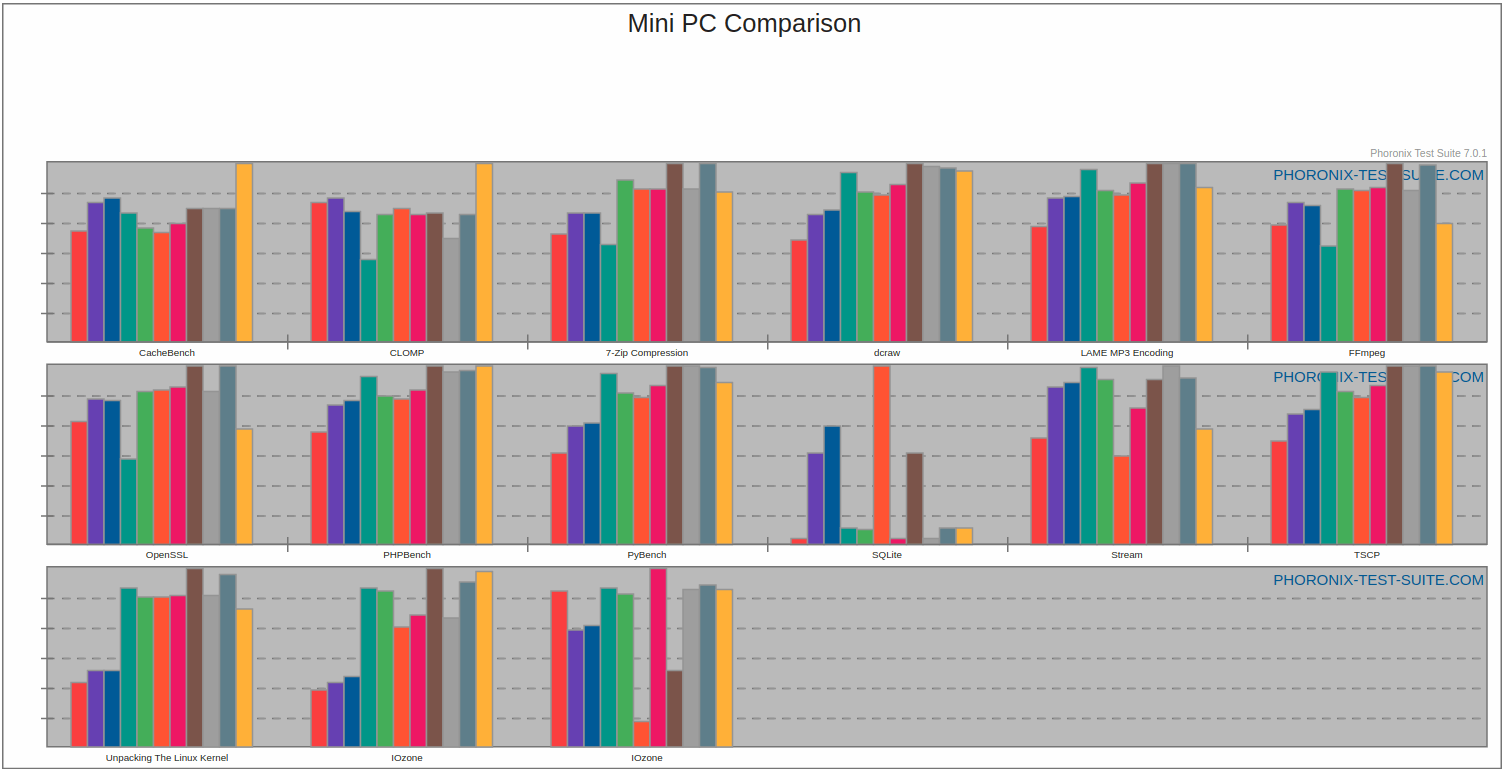
Next, I’ve run ‘sbc-bench’ which is a small set of different CPU performance tests focusing on server performance, ‘glmark2’ from the standard repositories which is a benchmark for OpenGL (ES) 2.0, some real-world timing tests for the compilation, zipping and unzipping of the Linux mainline v5.2 kernel, ‘iozone’ also from the standard repositories which is a filesystem benchmark tool and finally ‘Octane 2’ which is a JavaScript benchmark and was run in Chrome.
A summary of the results from each of the above benchmark tests was compared with previously tested mini PCs as follows:
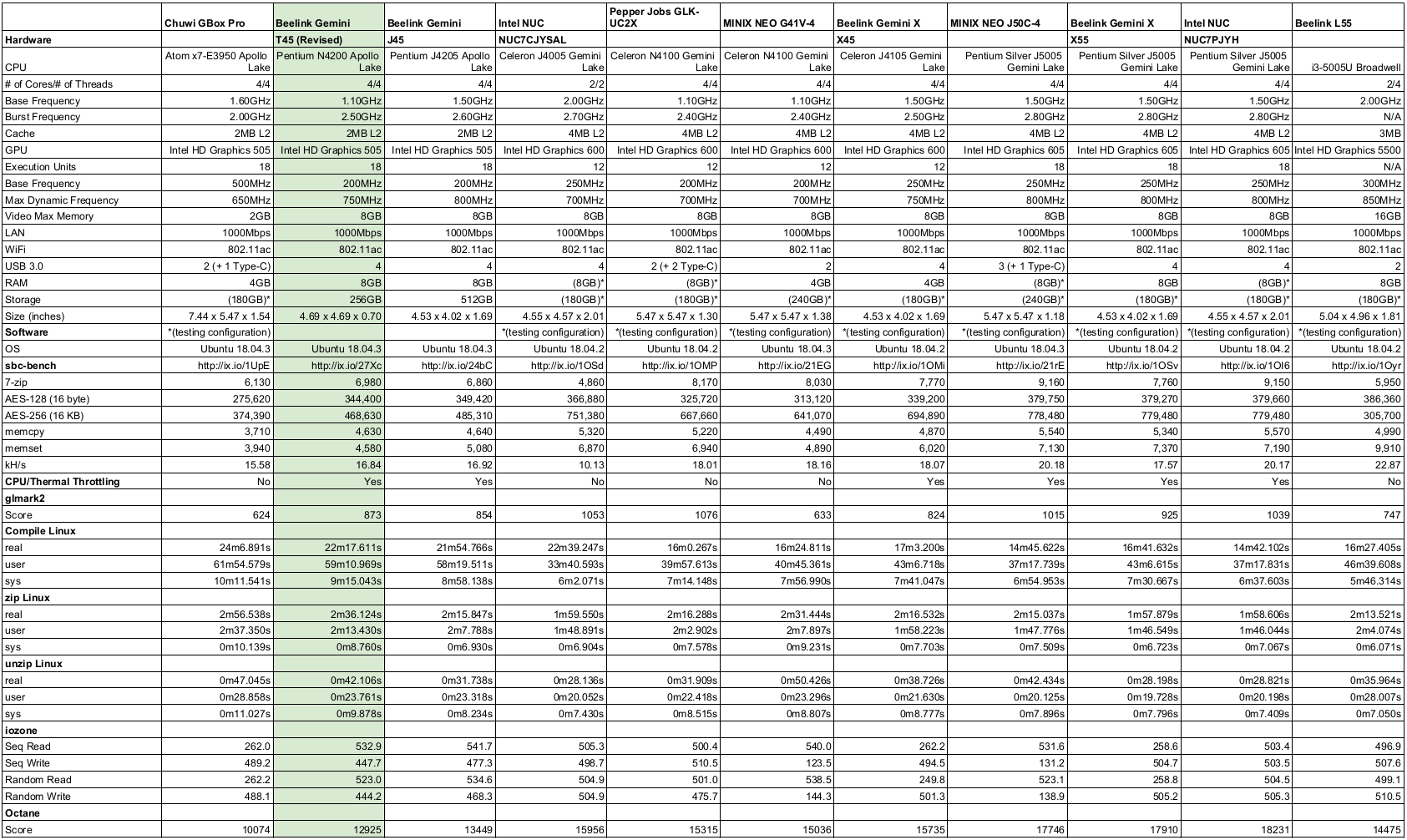
The iozone test produced some anomalies for both ‘Seq Write’ and ‘Random Write’ over multiple runs. Any run with a ‘Seq Write’ anomaly was excluded and the remaining runs were averaged to provide the sequential read/write and random read results. The ‘Random Write’ result of 444.2 was calculated as an average from running the command just with a record length of 16384k because when it was run with multiple record lengths the specific result for a record length of 16384k dropped to 70.8. Otherwise, the overall Linux results mirror the Windows performance and are comparable to the J45.
For a direct comparison with Windows I also tested Geekbench 4:
with the Ubuntu results being slightly better than those for Windows (1563 vs 1502 and 5044 vs 4644).
For real-world testing, I played videos in Edge, Chrome, and Kodi in Windows and in Firefox, Chrome, and Kodi in Ubuntu. The following tables summarise the tests and results for each of web browsing, Kodi in general and Kodi playing specific videos:
*Playing 4K@60fps videos in Chrome in Windows initially played okay just with the occasional dropped frame however later when the same videos were played again many more dropped frames were encountered. As the CPU usage was high when playing these video there was evidently some form of throttling in play which affected the processing because the CPU frequency dropped from 2.37GHz to 1.59GHz for the same video:
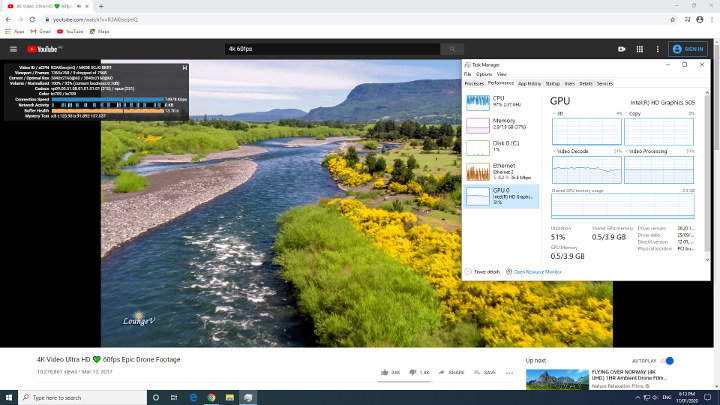
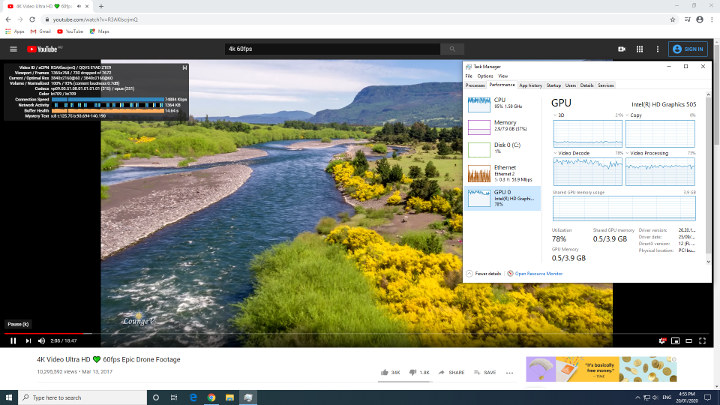
I’ve also included the ‘codec’ for the videos played in a web browser which is of particular relevance to Ubuntu given the issues playing ‘vp9’ and lack of hardware acceleration. Using the extension ‘h264ify’ in Chrome would not help as it removes the 4K and 1440p options and presents 1080p as the maximum resolution using the ‘avc1’ codec.
Finally, on both OS I also installed and ran the UNIGINE Heaven benchmark:
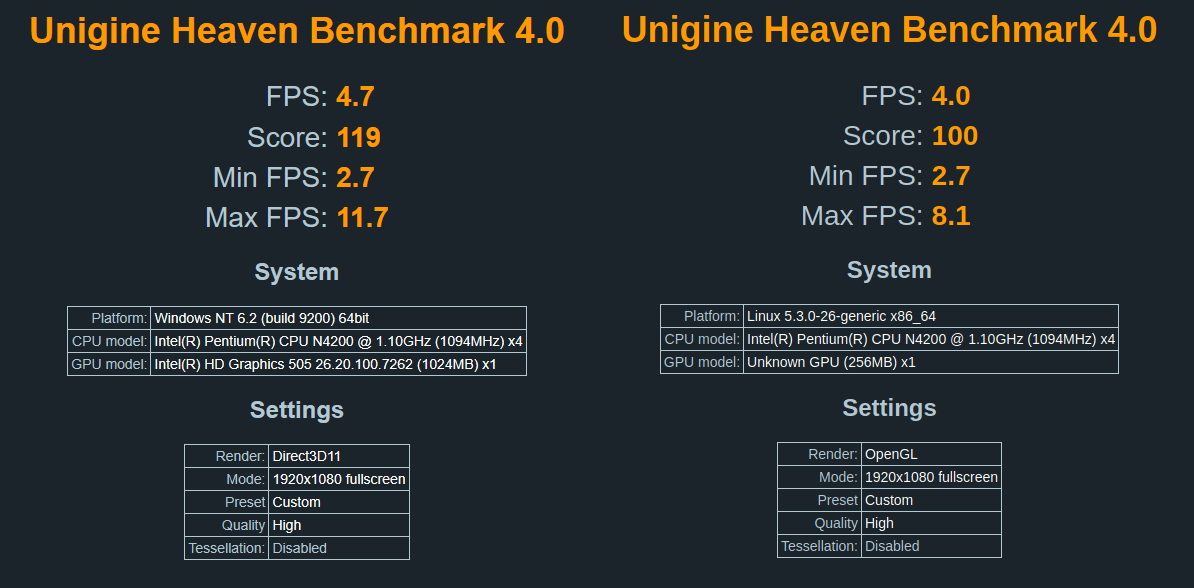
and the results show that the T45 will offer limited gaming performance.
That being said I went and installed Steam in both Windows and Ubuntu and briefly looked at gaming performance by installing and playing CS:GO. On Windows with the default settings resulted in a frame rate average of a rather low 10fps. Changing the video settings to low and dropping the resolution to 720p and the frame rate average improved to a playable 20fps:
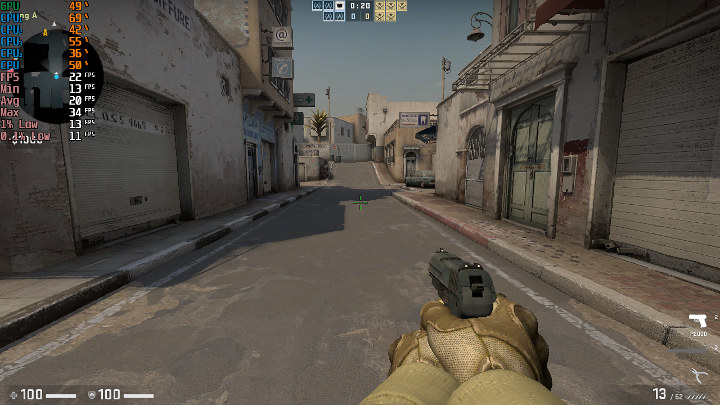
For CS:GO on Ubuntu, the default frame rate was slightly lower at an estimated average of around 8fps. Changing the video settings to low and resolution to 720p the frame rate average only slightly improved to an estimated 11fps:
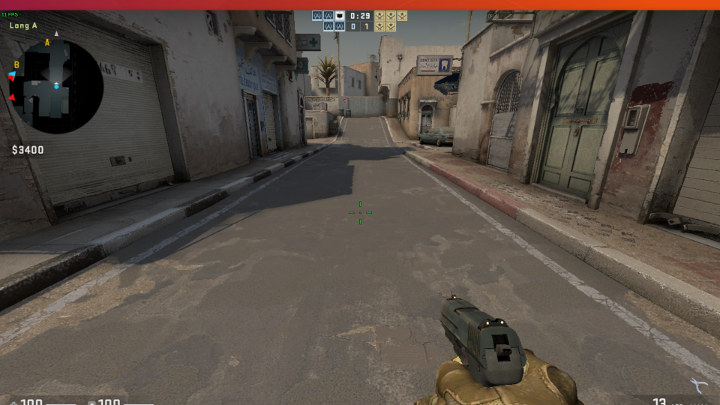
Network connectivity throughput was measured on Ubuntu using ‘iperf’:
Power consumption was measured as follows and is similar to other comparable mini PCs:
- Powered off – 0.6 Watts
- Shutdown – 0.7 Watts (Windows) and 0.6 Watts (Ubuntu)
- BIOS* – 12.5 Watts
- Boot menu – 12.5 Watts
- Idle – 10.6 Watts (Windows) and 8.2 Watts (Ubuntu)
- CPU stressed – 24.6 Watts then drops to 23.3 Watts (Ubuntu)
- Video playback** – 18.2 Watts (4K in Windows) and 16.5 Watts (1080p in Ubuntu)
* BIOS (see below)
** The power figures fluctuate so the value is the average of the median high and median low power readings.
Finally, the BIOS settings are partly visible and unlocked and a brief overview is available in the following video::
As previously mentioned the updated T45 now uses a fan to assist with heat dissipation. It has a large heatsink that covers nearly the entire board with a cutout for the fan:
Note that this heatsink also covers the M.2 SSD drive meaning that it will need to be removed and thermal paste reapplied if accessing the M.2 SSD for any reason.
The fan creates airflow over the heatsink and also utilizes the all-metal case to further dissipate the heat.
Whilst there is a warning on the underside of the case:
it only gets warm. During benchmarking the maximum temperature I recorded on the top of the device was 41.8°C with an ambient room temperature of 29.8°C:
and the device was okay to handle when holding it to insert/remove USBs etc..
The fan is not overtly loud (the 35.5 dBA as seen in the photograph is about average) however it does make a high-pitched whining noise which is noticeable in a quiet environment.
The fan and heatsink are effective as the maximum CPU core temperature recorded during testing was 57°C during a stress test in Ubuntu:
Also in Ubuntu, I ran a VP9 video in Kodi for 20 minutes and the internal temperature remained manageable during the playback peaking at 55°C:
Beelink was right to revisit the T45’s original specification as this updated version performs well. Going from the desktop J4205 processor to the mobile N4200 processor has seen just a slight drop in performance whilst the addition of a small fan has addressed the cooling concerns previously noted.
I’d like to thank Beelink for providing the T45 for review. It currently retails at around $240-$250 for the tested configuration from the various mini PC resellers on Aliexpress, GeekBuying, and others.
Note: With the recent outbreak of the novel coronavirus (2019-nCov) in China, supply chains, manufacturing, and logistics may all get affected which may create delays in receiving orders of mini PCs.

Ian is interested in mini PCs and helps with reviews of mini PCs running Windows, Ubuntu and other Linux operating systems. You can follow him on Facebook or Twitter.
Support CNX Software! Donate via cryptocurrencies, become a Patron on Patreon, or purchase goods on Amazon or Aliexpress


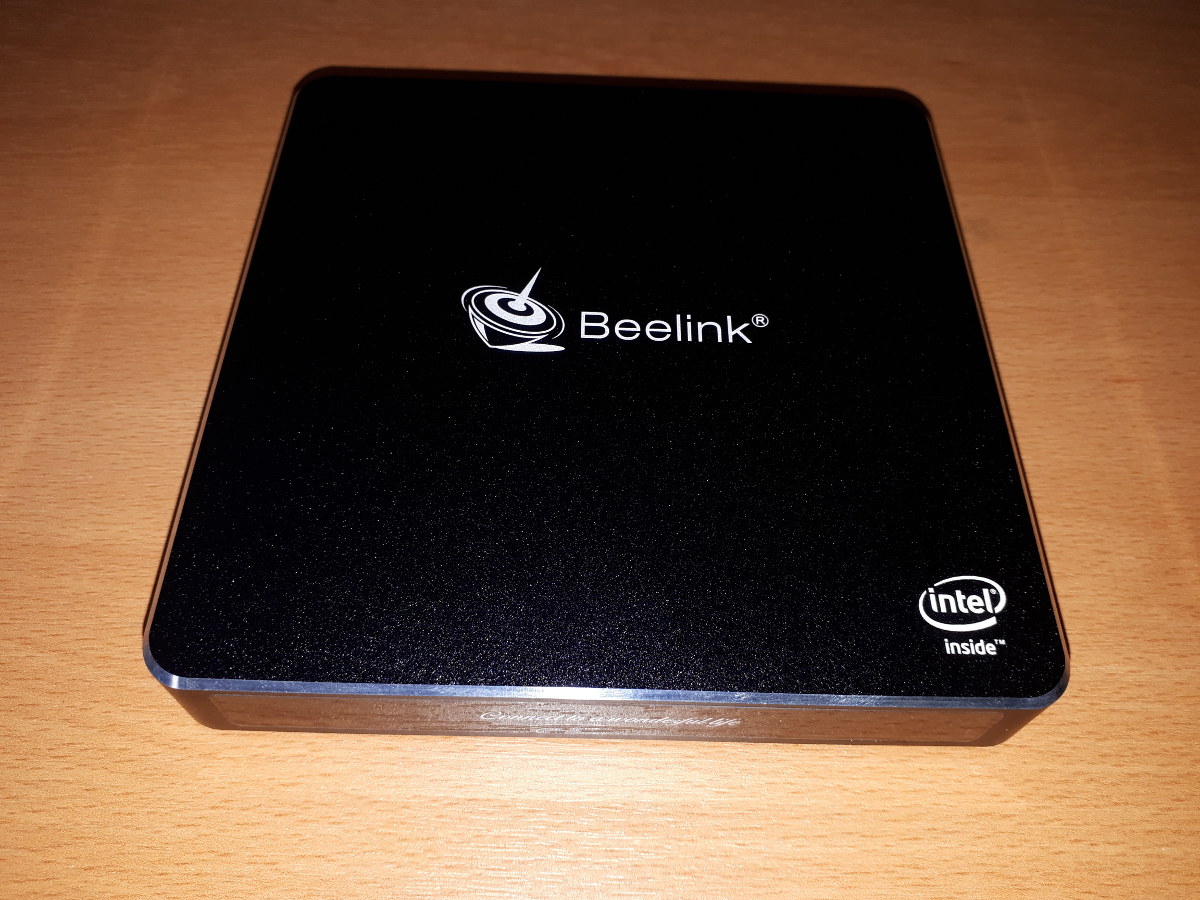
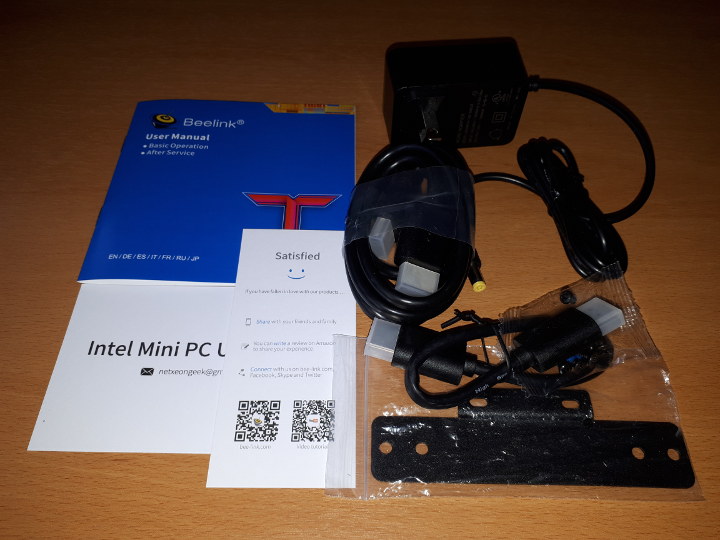
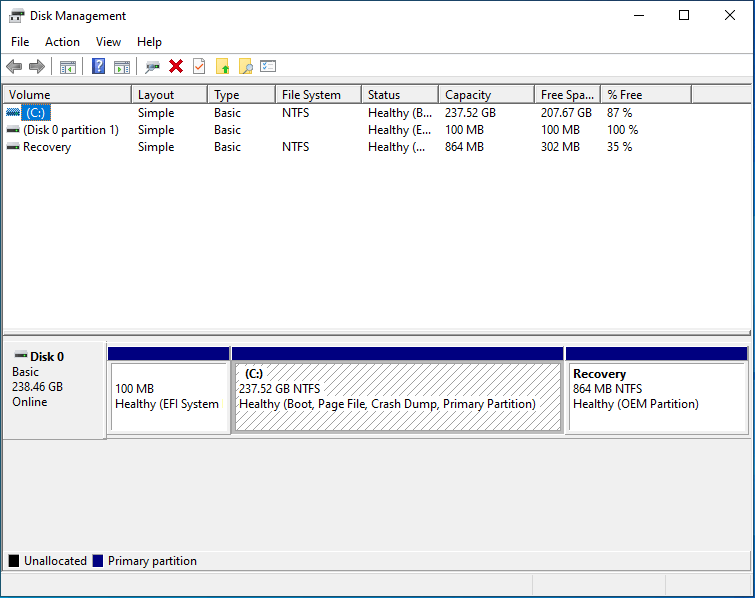
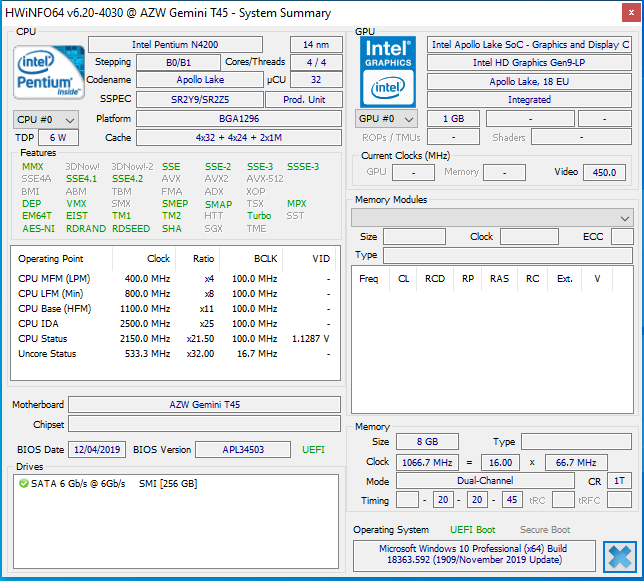
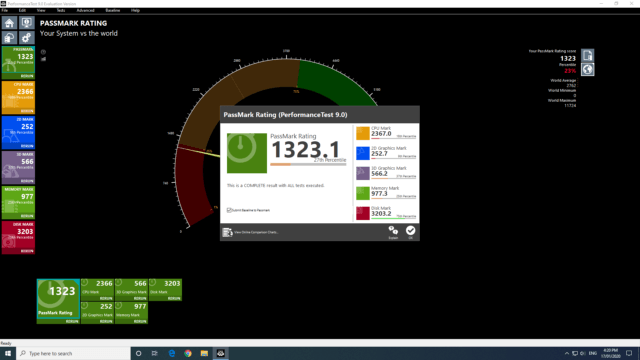
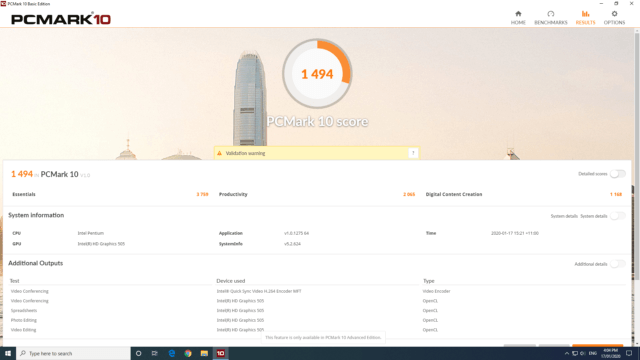
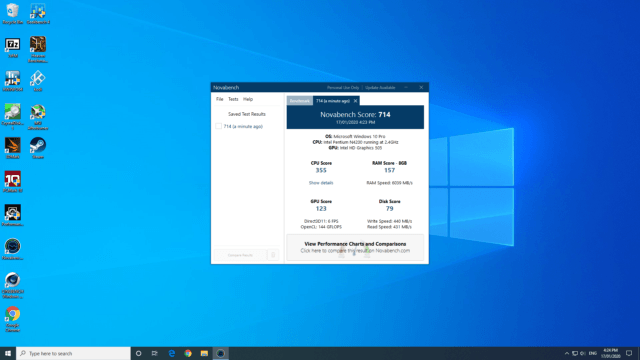
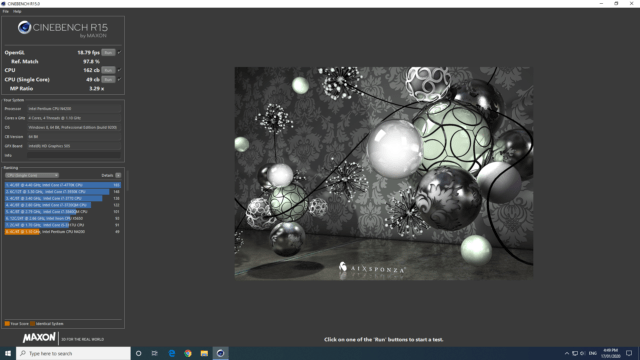
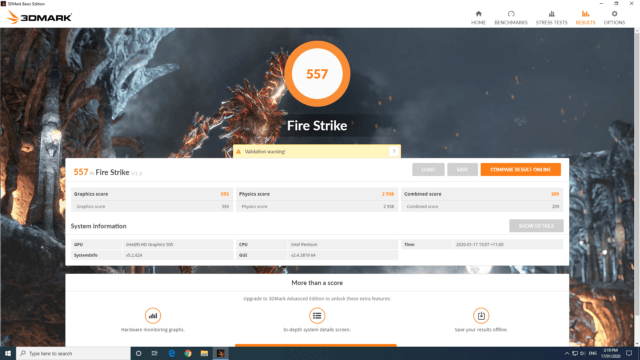
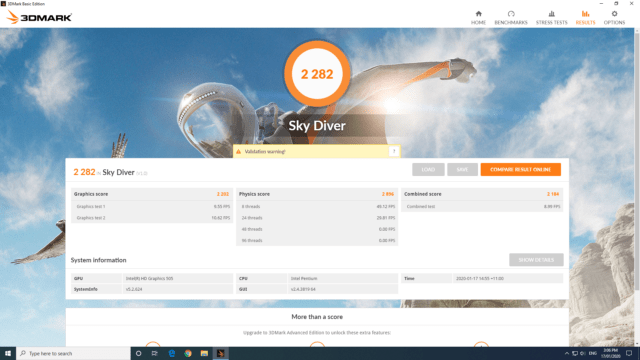
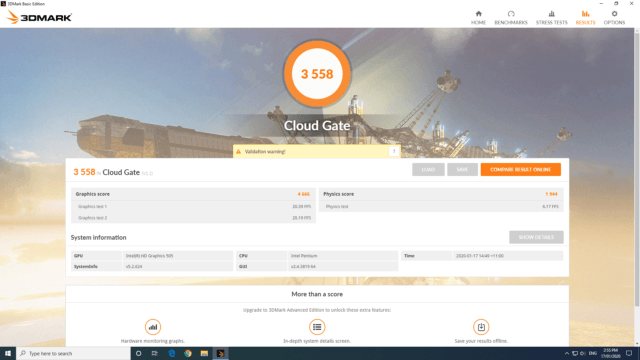
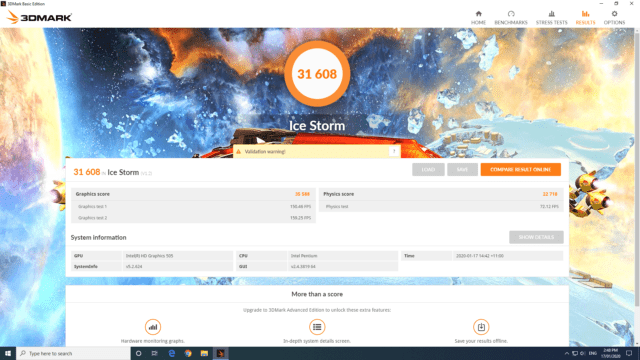
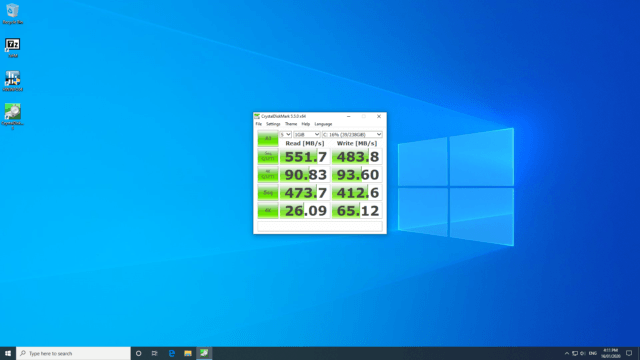
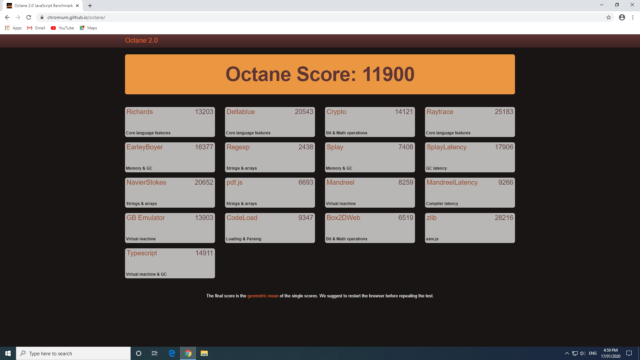
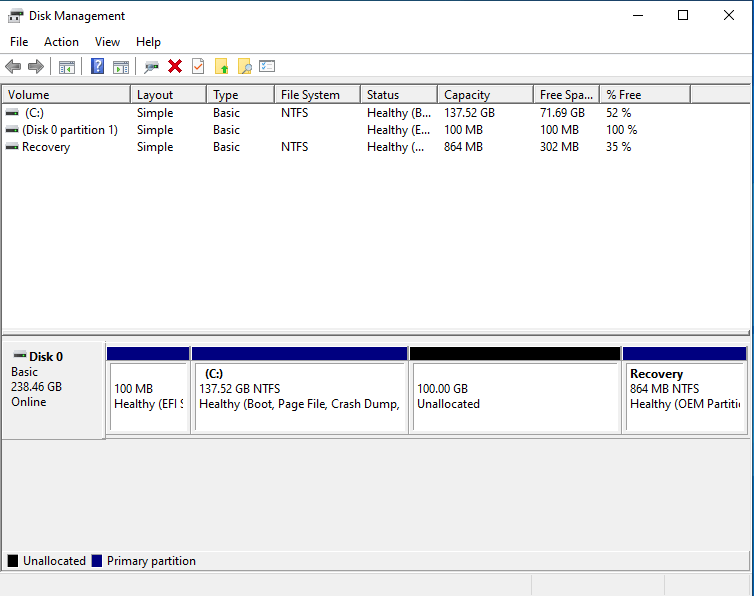
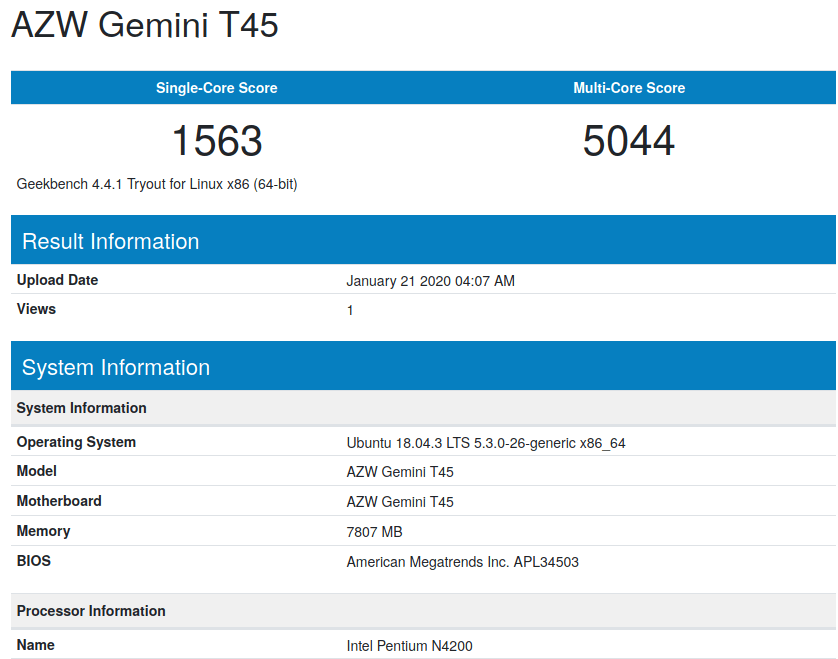
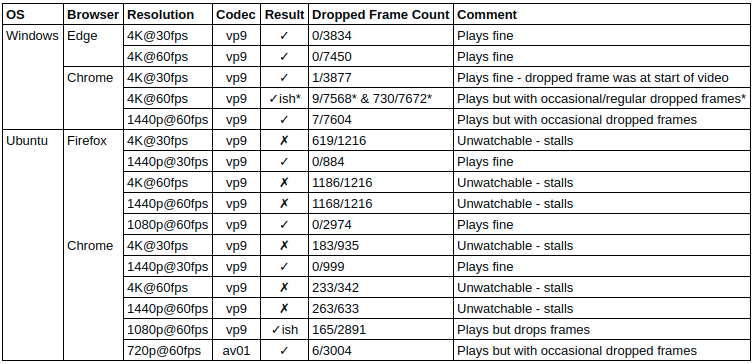



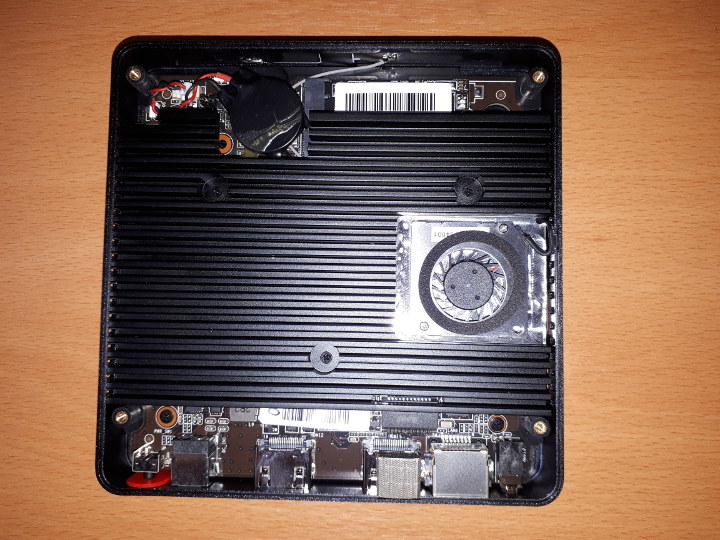
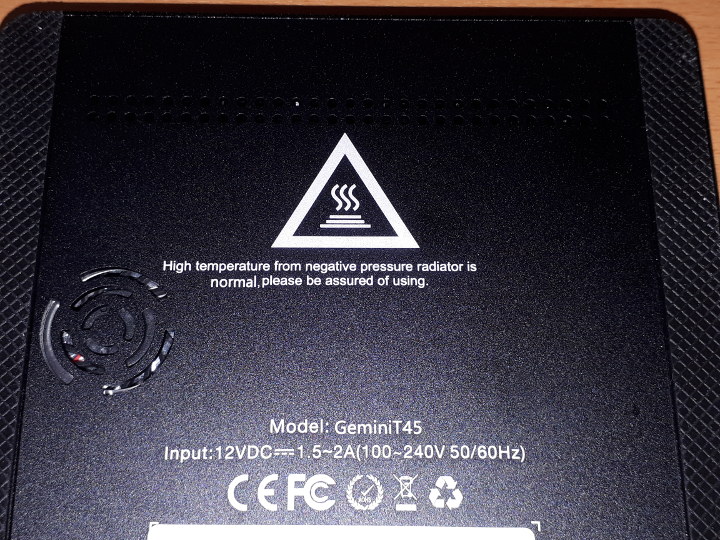
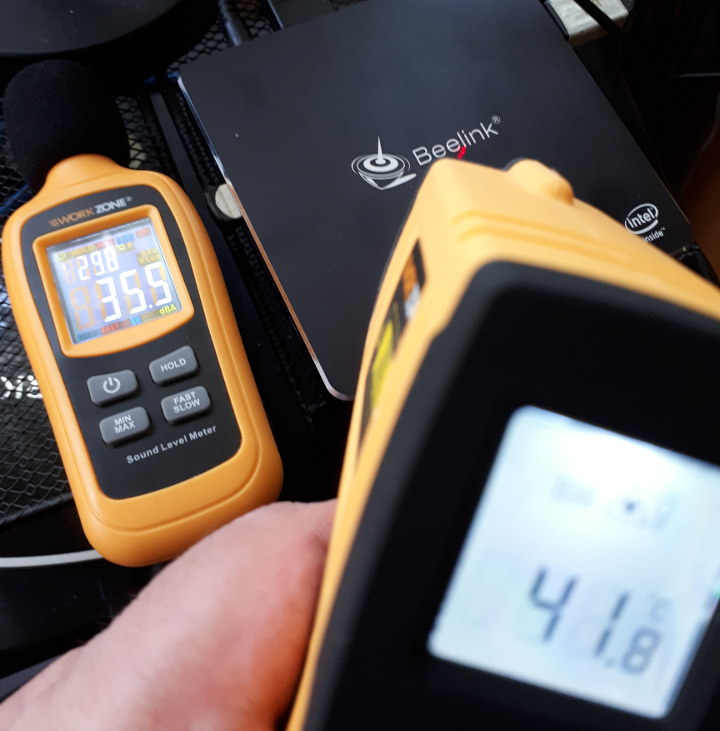
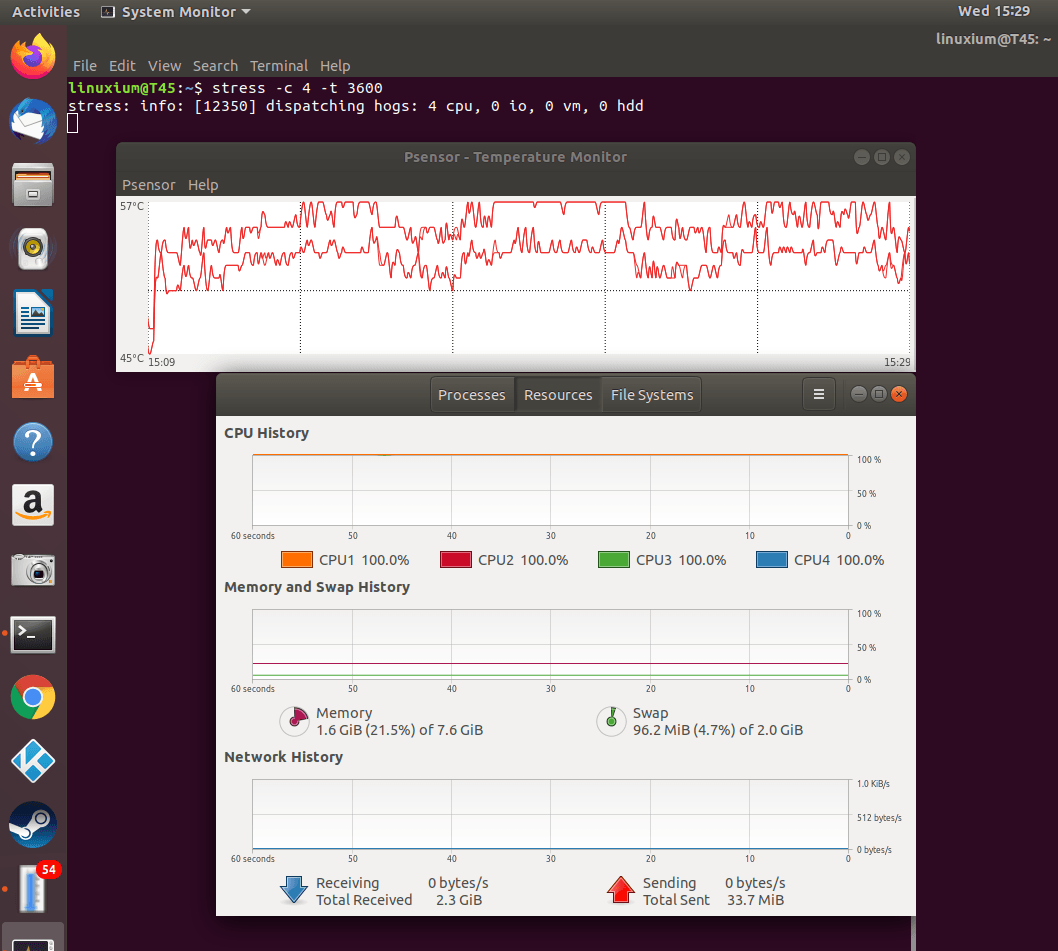
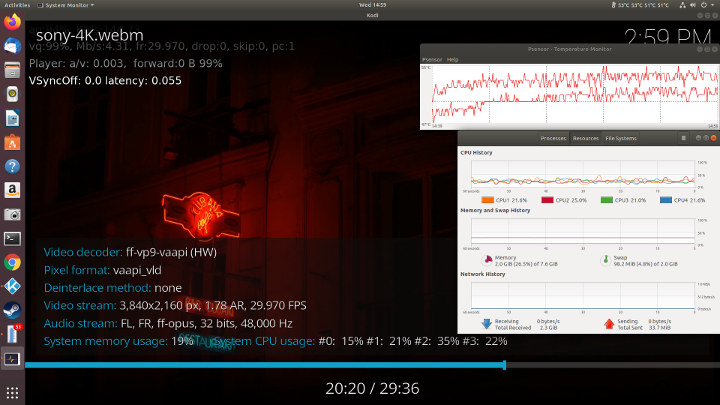



Over price crap
if can put up with 4gb, 64gb storage and N4100. The GL2 basic is only $133 inc p&p
Also if you dont mind a cooler running but 15w a 2 hdmi T 12 AMD A4 720 8gb 1000m win10 is only $135 inc p&p
add the recently reviewed Kingchuxing PCM28NV 2280 256gb ( 3 year warranty ) only $39 inc p&p
Thanks for the excellent review, f-s-e
A 2016 CPU in 2020.